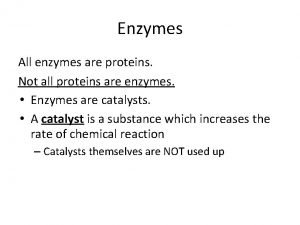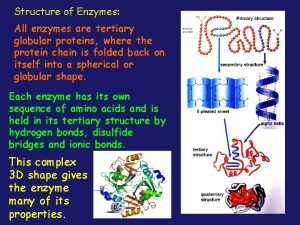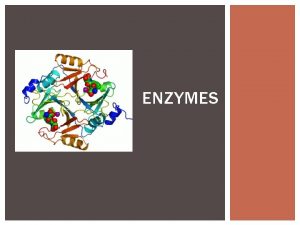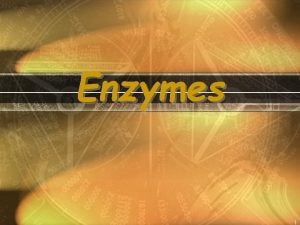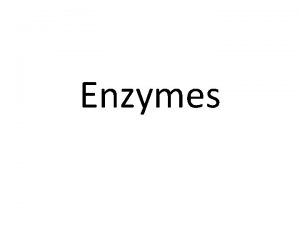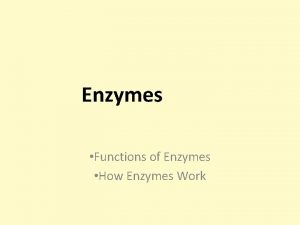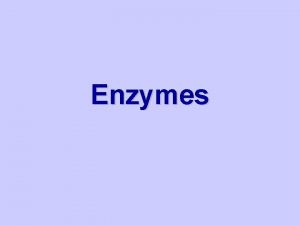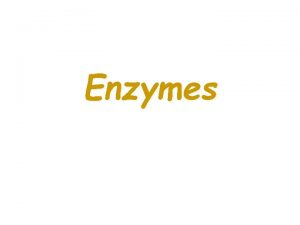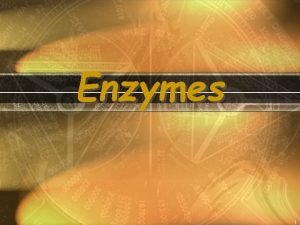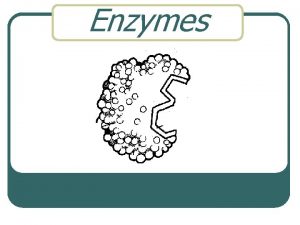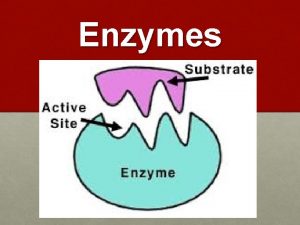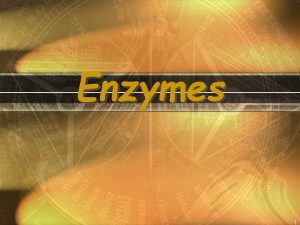Enzymes Proteins in Action Enzymes are Proteins Most












- Slides: 12

Enzymes Proteins in Action

Enzymes are Proteins Most enzymes are globular proteins. Like all proteins, enzymes are made up of chains of amino acids. Each enzyme has a specific shape in order to carry out its function.

Enzymes are catalysts Catalysts are substances that lower the activation energy of a chemical reaction. Enzymes make it easier to put together or take apart molecules. Enzymes are specific. Each enzyme does only one kind of job. Enzyme activity is regulated by the molecules they catalyze, or by other molecules.

Activation Energy Catalysts reduce the energy needed to carry out a reaction.

Enzyme Structure An enzyme has an active site, into which fits a substrate, like a key into a lock.

Enzyme Function The substrate fits into the active site in the enzyme. The active site changes shape as it forces the reaction to take place. The product is released, and the active site returns to its original shape.

Metabolism and Enzymes Many biological functions, including metabolism, are enzyme driven, and may involve multiple enzymes.

Enzyme Regulation Feedback loops often regulate enzyme reactions. For example, the product of a reaction may inhibit one enzyme in the reaction.

Allosteric Inhibition The regulator molecule changes the shape of the active site.

Competitive Inhibition A molecule with a shape similar to the substrate fits into the enzyme’s active site. Some poisons work this way.

Reaction speed The speed of an enzyme-catalyzed reaction depends on: temperature p. H salinity concentration of the substrate concentration of the enzyme

Enzyme Specificity Each enzyme carries out one job, and one job only. The lock-and-key fit between substrate and enzyme allows the enzyme to fit only certain substrates. Any one enzyme will either put molecules together or break them apart. The same enzyme won’t do both.
 Antigentest åre
Antigentest åre Not all enzymes are proteins
Not all enzymes are proteins All enzymes are globular proteins
All enzymes are globular proteins Most enzymes are *
Most enzymes are * Most enzymes are
Most enzymes are Suit the action to the word the word to the action meaning
Suit the action to the word the word to the action meaning The lion and the mouse plot elements
The lion and the mouse plot elements Rising action of a story
Rising action of a story Exposition rising action climax falling action resolution
Exposition rising action climax falling action resolution What is a plot sequence
What is a plot sequence Malay mancatcher diagram
Malay mancatcher diagram What is the climax of the most dangerous game
What is the climax of the most dangerous game In the name of allah the most gracious
In the name of allah the most gracious

